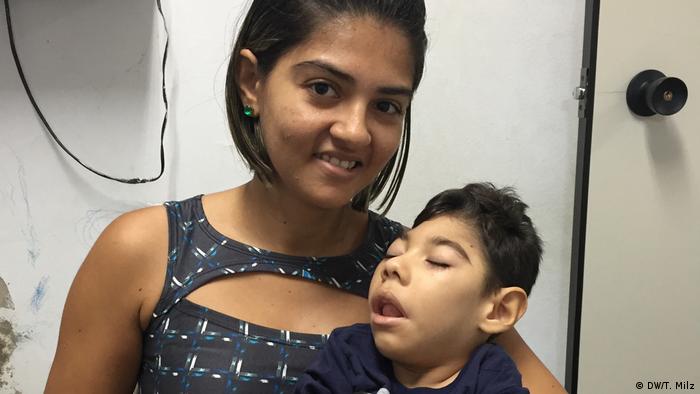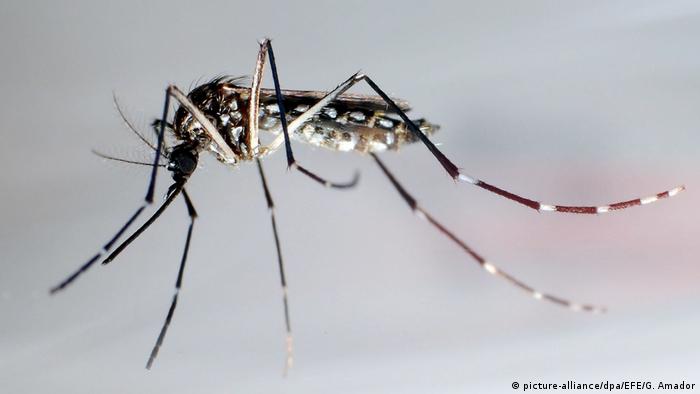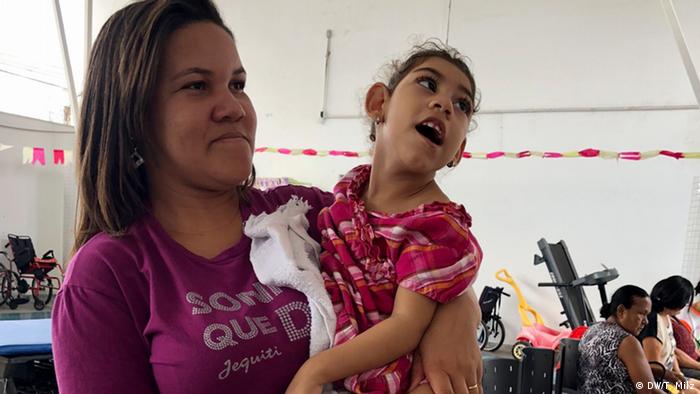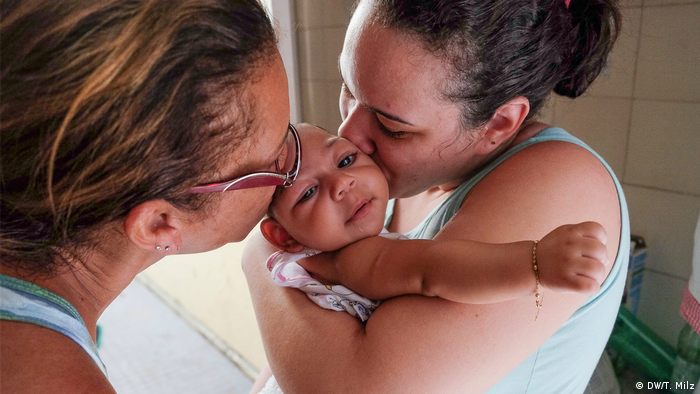Four years ago, the Zika Virus raged in Brazil. Thousands of children were born with Microcephaly, with small head. Most of them are severely damaged and remain all their lives in need of help.

Still Adrian is in the arms of his mother. He had just started shouting, reports Daiane Santos Silva – three years and seven months. “He has a stiff, the most severe stage of Microcephaly, suffers from joint and has a lordosis [curvature of the spine].” Blame the infection with Zika was a Virus she had contracted in the pregnancy course.
The end of 2015, news about Babies made in Brazil are too small for the heads, the round. Within a few months, around 3,000 children were born with Microcephaly, the most in the poor North-East of the country. Doctors make the then-rampant Zika Virus responsible, which attacks the brain of the fetuses. The earlier in pregnancy the mother with Zika the damage was infected, the worse it is.
The 24-year-old Daiane lives in the interior of the state of Sergipe. For Adrian, it must treatments to Aracuja, the capital of Sergipe, where specialist doctors treat the University hospital of the Microcephaly-children. Adrian refers to a life-long state pension in the amount of a minimum wage. This is usually enough for diapers and the food that is fed to it via a tube.
“Forever dependent”
Daianes life revolves almost 24 hours a day to your son. “He is my absolute priority – I can’t work, not learning, I quit my teaching.” Maybe you want to eventually have a second child, but to the extent that they could not think of currently. “I don’t think much about the future. Because the future is only in God’s Hand. I can only think of today and what can I do today for my son.”

The tiger mosquito (Aedes aegypti) spread the Zikavirus
You rate to the mothers, not about the future of their children thinking, says pediatrician Ana Jovina Barreto Bispo from the University clinic. How long will you live, and under what conditions, is hardly to predict. “We see no Chance that the children can sometime be in the future times independently. You will be eternally dependent, and even the most extreme.”
Hardly any new cases
However, the Situation was “better than expected”. There is since the peak of the epidemic in 2016, hardly any new cases, but unfortunately, hardly any positive Surprises. “The majority is developed in the framework of the Normal for a person with neuropathy, the most severe stage. But we have two children on the run, and what to talk to the start – so children understand the show, that something. But the vast majority is damaged in the most severe way.”
Specifically, this means: “The children are without any movement, not even on the ground they crawl. Where you put them, there they will stay. Without movement, without having to grab objects or to lead them to the mouth.”
Sadness, fatigue and hopelessness
Some of the mothers had first had problems, the fate to accept, would not come for months for treatment, according to the pediatrician. But now many of them come back to the clinic. “We already have all the phases gone through, the initial diagnosis, the grief, the difficulty, it is to accept, the Phase of the fatigue, the hopelessness and that nothing wants to give. But today, the mothers are calmer.”
Low-income families meet the diagnosis of Microcephaly is particularly difficult, says Mylena Amaral Melo, Director of the urban health centre CE II in Aracaju. Of the 27 children from the Metropolitan area of Aracaju, which are supervised by physical therapists, neurologists, orthopedists, speech therapists and psychologists free of charge, would be 90 per cent from poor families; the mothers were usually single parent and unemployed. Wealthier families had their children in private clinics treat, so Amaral.

Communication via WhatsApp: Valmira de Jesus Aragão exchanges information with other Concerned
Many husbands did not withstand the Situation, says Valmira de Jesus Aragão, herself a mother of a girl with Microcephaly. “I know of cases in which the husbands are gone, after you heard the diagnosis of their children.”
Valmira has set up a WhatsApp group with 56 mothers; to help each other. Her daughter Ana Clara is treated twice a week in the CE II. In addition, the family invested their narrow income in a period of intensive treatment in a private clinic. For Ana Clara can now say “Mama” and “no”. Compared with other children of her daughter, believes Valmira.
A Special wheelchair for a thousand euros
Now the three year old in the school to ever even have contact to other children. But since you can’t sit alone, needs Ana Clara for a Special wheelchair. Cost: 4207 Reais, about one thousand euros. For Valmira sold on the hospital corridors, creams and Shampoos, while their daughter is treated.
Money to the SUS, the national health system, in which each free – of-charge is treated at least in theory, is missing. In practice, the decision, the expensive programs for Microcephaly-children continue to mean, that somewhere else is sacrificed, says Deputy health Secretary of the city of Aracaju, Carlos Noronha.

Baby with Microcephaly: do not Prevent, in order to avoid another epidemic
As a gynecologist and a specialist in childbirth, he has witnessed the Microcephaly epidemic in 2015 and 2016, self-close up. As chief administrator, he now sees the Dilemma of the chronically under-funded SUS. Each treatment by specialist doctors cost between 80 and 90 Reais (20 euros), so Noronha – per session. “We are now concentrating on the prevention, to prevent it from coming once again to such an outbreak,” he says.
So the struggle of the Egyptian tiger mosquito, Aedes aegypti applicable. Because in addition to yellow fever and the Dengue fever they is also for the Transmission of Zika responsible. The Virus is still active, warned Brazil’s health authorities, only a few days ago. Is not the danger, so for a long time.